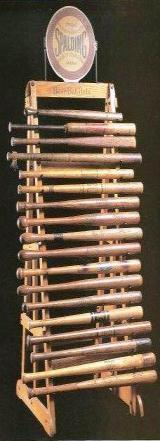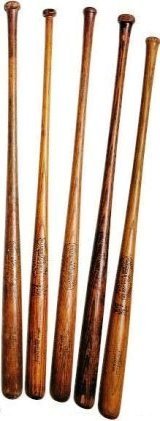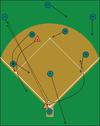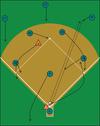What is the advantage to one hop a ball to home plate vs. a direct throw to the catcher?
by Bonnie Jean
(Jersey Shore)
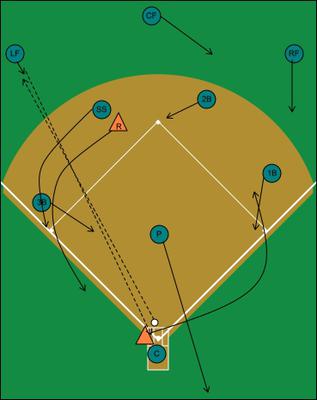
Single Left Field Runner On Second
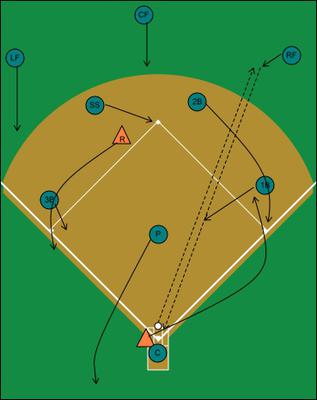
Single Right Field Runner On Second
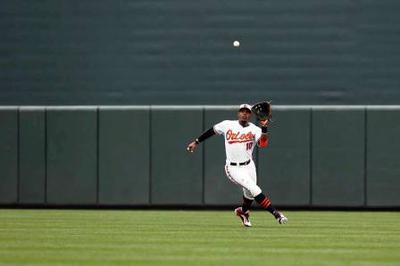
Outfielder Getting Around, To and Through A Fly Ball
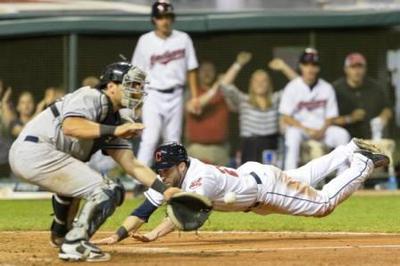
Relay Throw One Hopped To Plate
Bonnie Jean asked: I played third base, learned its better to become a target for the throw, not the runner.
I preferred to get a line drive from the left fielder or the cutoff, than try to catch a ball coming off the sand/dirt.
What is the advantage to one hop a ball to home plate, vs. a direct throw to the catcher?
Rick answered: Bonnie Jean, thank you for your question.
In the diagrams above, we are looking at a scenario with a runner on second base and a base hit to left field in the first one, and a base hit to right field in the second.
On the hit to left field, the cutoff is the third baseman. On the hit to right field, the cutoff is the first baseman.
You want your outfielder to make an accurate throw, with his/her thought process to throw the ball to the plate, through the cutoff's head.
That throw, not cutoff, should bounce once and be waist high to knee high for the catcher. Outfielders work out the logistics for their particular arm strength in practice and cutoffs learn the arm strength of their outfielders, to make it all run smoothly.
That ball, not cutoff, will pick up speed off the grass, or dirt on a softball field. The lower hop provides the catcher with an opportunity to put a quick tag on the sliding runner.
Should the defense not have a play at the plate, the thrown ball at head height for the cutoff, allows him/her to cut the ball off and either throw out the batter attempting to go to second base, or with the cut, hold the batter at first.
A ball thrown from the outfield, at a trajectory to go directly in the air to the catcher, will be at a height where it can't be cut off.
The batter, as he/she approaches first base is looking to see the ball come out of the outfielders hand. As the ball comes out, the batter-runner has an immediate read on whether they head for second, or stop with their turn, based on the trajectory of the ball as it leaves the outfielder's hand.
When the outfielder puts the throw on a line, the batter-runner has to respect that the ball can be cutoff, and not run into an out on the backside.
Offensively, it's always better to be in scoring position, rather than at first base.
Defensively, it's always better to keep runners out of scoring position whenever possible.
If the runner attempting to score is the winning run of the game, and the outfielder is close enough to reach the plate, on a line, without the cut, that is a good time to throw through.
Defensively, you always have to be aware of the trailing base runners, with the idea that, if you don't have a good shot at the plate, your cutoff needs to be able to have a ball they can handle for the backside of this play.
One of the more exciting, as well as technical plays in baseball is a double cut which results on getting the runner out at home, or third base.
Much has to happen on this play and it must all be precise and without hesitation. The outfielder gets to a ball in the gap, with his back to the infield. Depending on which gap the ball is hit into, either the SS or 2B is the lead cut, with the other trailing behind at about 12-15 feet.
Infielders are taught to be getting lined up for where the throw is going to go, at the same time yelling "ball" to the outfielder, so that he is able to turn and throw to the sound. Without the infielder's voice, precious time is lost as the outfielder locates the cutoff man.
Infielders also set up based on the strength of their outfielder's arm. Let the outfielder make the long throw if their arm is strong, if not, the lead infielder needs to go out further for the throw.
That throw is headed through the lead cuts head. If online, the lead cuts the ball and throws to the base determined at that point.
If the throw is high, or is going to short hop the lead cut, he lets it go and the trail fields the throw and makes the throw.
This throw goes through the head of the cutoff in the infield grass, to either cut and relay the plate, or let it go through.
A lot of moving parts, when it's all put together, a thing of beauty and precision, a major psychological lift to a defense, a crushing blow to an offense.
Yours in baseball,
Rick

